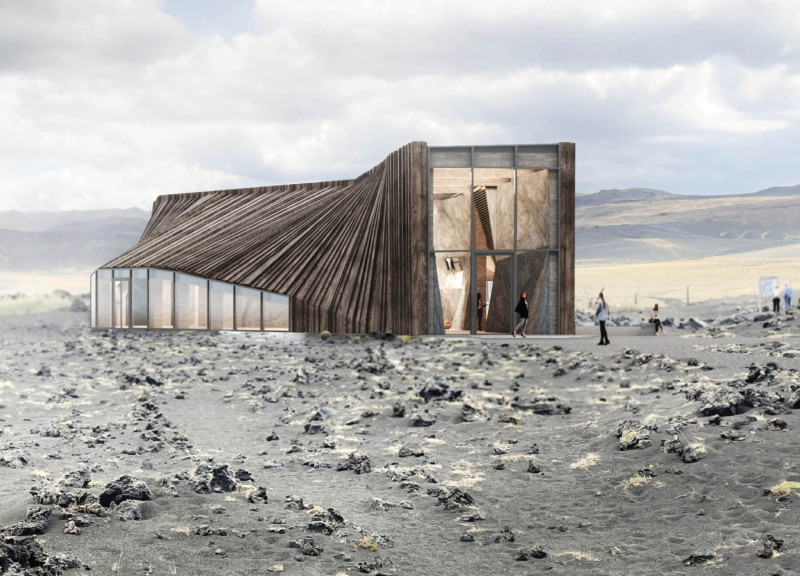5 key facts about this project
The Ridge is situated on the Mid-Atlantic Ridge in Iceland, connecting architecture with the natural landscape. The building functions as a volcano museum and exhibition space, aimed at educating visitors about the geological features that shape the area. The design is based on the theme of divergence, reflecting the tectonic activities that define both the region and the island itself.
Architectural Form and Layout
The design creates a prominent void that diverges from two solid volumes. This void symbolizes the geological processes of the area. The southern volume hosts a coffee shop, offering views of the Hverfjall volcano, while the northern volume contains private areas like an information desk, offices, and service rooms. This thoughtful separation of spaces helps visitors navigate through the building easily.
Materiality and Connection to Place
Locally relevant materials are incorporated into the design. Interior walls are clad in basalt stone, which mirrors the geological composition of Iceland. The roof is made of dark timber, enhancing how the building fits into its surroundings. The use of timber in the structural framework is carefully coordinated, creating a visual connection with the natural lines found in the area.
Sustainability and Functionality
Sustainability is an important aspect of the design. The Ridge uses geothermal energy for heating and cooling, aligning with Iceland's environmental practices. The open space museum features roof glazing to welcome natural light, making the void feel inviting for exhibitions. The flexible design allows the museum to host different temporary exhibitions, ensuring that it remains engaging and relevant to visitors.
The layout emphasizes accessibility, with the main entrance positioned on the southern side. This allows visitors to flow directly from the road and hiking trails into the building. This design choice enhances the experience, creating a smooth transition from the outdoor landscape to the interior museum. The void serves not only as an architectural feature but also as a way to connect visitors to the geological story of the region.





















































